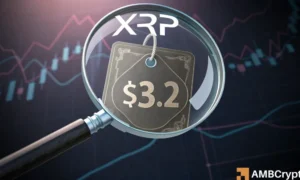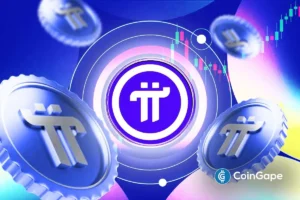Understanding the Current Dynamics of Digital Asset Treasuries
Digital asset treasuries (DATs) have recently attracted attention due to a sharp decline in their market net asset values (mNAVs). Geoffrey Kendrick, head of digital assets research at Standard Chartered, emphasizes that this downturn raises critical questions about the sustainability of crypto purchases for these entities. As DATs face scrutiny, their share prices have also experienced a downturn, prompting investors to reevaluate their strategies in the rapidly evolving digital asset landscape.
Importance of mNAV in Digital Asset Strategies
An mNAV above 1 is crucial for the expansion of digital asset treasuries. When mNAV falls below this threshold, it signals a weakened balance sheet, potentially leading to consolidation rather than growth. The current market conditions highlight the need for DATs to manage their investments adeptly to mitigate risks associated with declining asset values. Investors must become vigilant, ensuring that companies demonstrate a robust mNAV to support their ongoing acquisitions of digital assets.
Differentiation in the Digital Asset Treasury Sector
As the digital asset market grapples with challenges, the potential for differentiation among DATs emerges. Factors such as access to low-cost funding, scale advantages, and yield-generating mechanisms—including staking and decentralized finance (DeFi)—will help determine which companies thrive and which falter. Kendrick suggests that differences in business models and market strategies could create a dynamic landscape within the sector, rather than signaling its demise.
Ethereum’s Position as a More Sustainable Option
Ethereum-focused DATs have been positioned as the most sustainable due to their staking capabilities, which can enhance mNAVs directly. Strategic insights from Bitmine’s Tom Lee indicate that staking could add approximately 0.6 points to the mNAV of Ethereum-based treasuries. This advantage highlights the importance of yield-generating activities in crypto, placing Ethereum vehicles at a more favorable vantage point than those primarily linked to Bitcoin or Solana.
Implications for the Broader Crypto Market
The collective holdings of digital asset treasuries play a significant role in influencing overall crypto demand. Current estimates suggest that DATs possess about 4% of Bitcoin, 3.1% of Ethereum, and a mere 0.8% of Solana. Caution should be exercised regarding Bitcoin treasuries, as consolidation appears more probable, leading to a rotation of coins rather than the introduction of new purchases. Conversely, Ethereum DATs are expected to continue their accumulation strategy, providing a favorable backdrop for Ethereum’s price movement.
Notable Players in the Digital Asset Treasury Landscape
In this evolving sector, key players have emerged as focal points for investors. Companies such as Bitmine, SharpLink, and The Ether Machine are under close observation. These firms are central to discussions surrounding corporate balance sheets in relation to digital assets. As investor sentiment shifts, these organizations represent critical components in determining the future trajectory of digital asset treasuries and the broader cryptocurrency market.
Conclusion
As digital asset treasuries navigate a challenging environment characterized by declining mNAVs and reassessed strategies, the potential for differentiation among players in this space becomes increasingly relevant. With Ethereum-focused DATs exhibiting unique advantages through staking and liquidity, they are poised to sustain their growth in the face of market volatility. Investors will need to monitor the health of DATs closely, as their actions may significantly influence overall market dynamics in the ever-evolving world of cryptocurrencies.

















